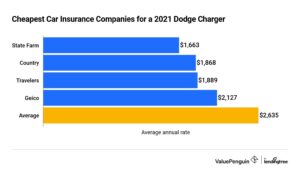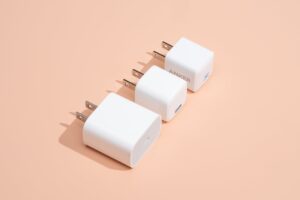Are you in a pinch and need to charge an 18650 battery, but you don’t have a charger on hand? Don’t worry, we’ve got you covered. In this article, we will show you how to charge an 18650 battery without a charger. Whether you’re on a camping trip or simply forgot your charger at home, we have a solution that will keep your devices powered up and ready to go. So, let’s dive right in and learn how to charge an 18650 battery without a charger.
How to Charge an 18650 Battery Without a Charger
18650 batteries have gained popularity in recent years due to their high capacity, durability, and rechargeable nature. They are commonly used in a wide range of devices, including laptops, flashlights, and vaping devices. While most people rely on dedicated chargers to recharge their 18650 batteries, there may be situations where you don’t have access to a charger. Fortunately, there are alternative methods to charge an 18650 battery without a charger. In this article, we will explore different techniques and precautions to consider when attempting to charge an 18650 battery without a charger.
Method 1: USB Charging
One of the easiest methods to charge an 18650 battery without a charger is by using a USB charging cable. Many electronic devices, such as power banks, smartphones, and laptops, have USB ports that can provide a limited amount of power. Here’s how you can use a USB cable to charge your 18650 battery:
- First, gather the necessary equipment: an 18650 battery, a USB cable with a compatible connector, and a USB power source like a power bank or laptop.
- Ensure that the USB power source is fully charged and turned on.
- Insert one end of the USB cable into the USB power source.
- Identify the positive (+) and negative (-) terminals on the 18650 battery. The positive terminal is usually indicated by a raised button or a “+” sign.
- Connect the positive (+) terminal of the battery to the corresponding positive (+) terminal on the USB cable.
- Connect the negative (-) terminal of the battery to the corresponding negative (-) terminal on the USB cable.
- Once the connections are made, the USB power source should start providing power to the battery, initiating the charging process.
- Monitor the charging process closely and disconnect the battery from the USB cable once it reaches an appropriate level of charge. Extended charging beyond the recommended capacity can lead to damage or overheating.
While this method is convenient, it’s essential to note that USB ports may not provide enough power or the correct voltage to charge an 18650 battery efficiently. The charging process using USB may take a longer time compared to using a dedicated charger, and it may not be suitable for charging multiple batteries simultaneously.
Method 2: External Power Supply
Another option to charge an 18650 battery without a charger is by using an external power supply. This method is suitable if you have access to a power supply that can deliver the appropriate voltage and current required to charge the battery. Here’s how you can use an external power supply:
- Ensure you have an external power supply with adjustable voltage and current output, such as a bench power supply.
- Set the voltage and current output of the power supply to the appropriate levels for charging the 18650 battery. The recommended voltage for charging is usually around 4.2 volts (the maximum voltage for an 18650 battery), and the current should be within the safe limits specified by the battery manufacturer.
- Identify the positive (+) and negative (-) terminals on the 18650 battery.
- Connect the positive (+) terminal of the battery to the positive (+) terminal of the external power supply.
- Connect the negative (-) terminal of the battery to the negative (-) terminal of the external power supply.
- Once the connections are made, the external power supply should start delivering power to the battery, initiating the charging process.
- Monitor the charging process closely and disconnect the battery from the power supply once it reaches an appropriate level of charge.
Using an external power supply provides better control over the charging process, as you can adjust the voltage and current output according to the battery’s requirements. However, it’s crucial to exercise caution and not exceed the recommended voltage and current limits to prevent damage to the battery or potential safety hazards.
Method 3: DIY Charging Device
If you find yourself without a charger or access to USB ports or an external power supply, you can create a simple DIY charging device using readily available materials. This method requires more effort and caution, but it can be a viable option in emergencies. Here’s how you can create a DIY charging device:
- Gather the necessary materials: a DC power source (e.g., a power adapter), a resistor or potentiometer, a connector or wires, and electrical tape.
- Disconnect the DC power source from any electrical outlets or power supplies.
- Identify the positive (+) and negative (-) terminals on the DC power source and the 18650 battery.
- Connect the positive (+) terminal of the DC power source to the positive (+) terminal of the battery.
- Connect the negative (-) terminal of the DC power source to the negative (-) terminal of the battery.
- Set the resistor or potentiometer to limit the current flow to a safe level. Consult the battery manufacturer’s specifications or reliable sources for recommended values.
- Secure the connections using electrical tape or other suitable insulating materials to ensure safety.
- Once the connections are made and secured, the DC power source should deliver power to the battery, initiating the charging process.
- Monitor the charging process closely and disconnect the battery from the DC power source once it reaches an appropriate level of charge. Remember not to overcharge the battery.
This method requires some basic knowledge of electrical circuits and precautions to prevent accidents, so it’s essential to exercise caution and take appropriate safety measures when attempting DIY charging.
Charging an 18650 battery without a charger should be considered a temporary solution. It is always recommended to use a dedicated charger designed specifically for 18650 batteries to ensure safe and efficient charging.
Remember, improperly charging an 18650 battery can lead to safety hazards, damage to the battery, or reduced performance. If you are unsure about any aspect of charging an 18650 battery without a charger, it is best to seek professional guidance or wait until you have access to a proper charger.
Frequently Asked Questions
Can I charge an 18650 battery without a charger?
Yes, it is possible to charge an 18650 battery without a dedicated charger using alternative methods.
What alternative methods can I use to charge an 18650 battery?
There are a few methods you can try to charge an 18650 battery:
- Using a universal battery charger: These chargers can accommodate various battery types, including 18650 batteries.
- Using a power bank: Some power banks have the capability to charge individual batteries. Check if your power bank supports 18650 batteries.
- Using another device with a USB port: Some devices, such as laptops or portable speakers, have USB ports that can be used to charge 18650 batteries. However, this method may charge the battery slowly.
Can I charge an 18650 battery using a USB cable?
No, you cannot directly charge an 18650 battery using a USB cable. The USB cable alone does not provide the necessary charging circuitry for the battery.
Is it safe to charge an 18650 battery without a charger?
While it is possible to charge an 18650 battery without a charger using alternative methods, it is important to exercise caution. Make sure to use compatible devices and follow proper charging procedures to avoid any potential risks.
Can I charge multiple 18650 batteries simultaneously without a charger?
Charging multiple 18650 batteries simultaneously without a charger can be challenging. It is recommended to use a dedicated charger that has multiple slots to ensure safe and efficient charging for each battery.
Final Thoughts
To summarize, charging an 18650 battery without a charger can be done using various methods. One option is to use a power bank or another device with a USB port to charge the battery. Alternatively, you can use a voltage-regulated power supply and connect the positive and negative terminals of the battery to the appropriate voltage output. Another option is to use a DIY charger by utilizing a 9V battery, a resistor, and a connector. Remember to always handle lithium-ion batteries with care and follow safety instructions. With these methods, you can successfully charge an 18650 battery without a charger.



